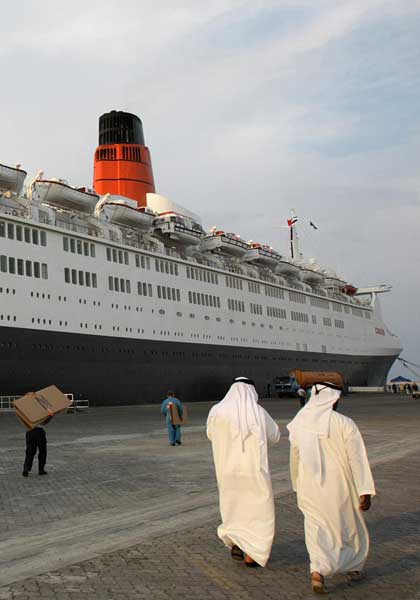Simon Calder: Avoid the airport experience with a 'no-fly' cruise

First they came for our nail clippers and tweezers; next, any water bottle containing more than 100ml was confiscated; now, that 500g printer-ink cartridge you hold so dear is prohibited from your hand baggage.
Perhaps I am in a minority in believing that last weekend's outrage, in which terrorists appear to have concealed the lethal explosive PETN in toner cartridges, was not such a triumph for the intelligence services as it was portrayed as being – rather, it was a failure of common sense. And while placing bombs on board aircraft is a thoroughly evil act, I suggest we count this one as a postal, not a passenger, issue.
Yemen is not a natural provider of office supplies to organisations such as synagogues in the Chicago area. Therefore, you might fondly imagine that the staff in the parcels offices in the capital, Sana'a, might have checked the despatches more closely before allowing them anywhere near an aircraft, cargo or passengers. But they didn't. The result: many passengers are newly and understandably alarmed about the danger of unscreened goods travelling in the hold beneath them. The rules appear to vary haphazardly from one country to the next, and even the Government's security tsar, Lord West, conceded that the incident highlighted "a bit of a gap" in aviation security. The best way to paper over it? Ban office supplies, or at least printer cartridges, from cabin baggage (although they may still be carried in hold luggage). Lighters and matches can still be carried through, and glass bottles of highly alcoholic and therefore flammable liquids are on sale as soon as you are through security. But as long as no one sneaks a Hewlett-Packard ink dispenser on, we'll all be safe. Won't we?
Just after the phrase "new tier of terror" entering the travel thesaurus, and PETN joining ATOL and IATA as an important aviation acronyms we can't quite spell out, I booked a cruise for next spring – departing from Southampton, and one of the growing number of "no-fly" cruises on offer from British ports. Neither the latest terrorism scare nor the alarming engine failure on the Qantas Airbus A380 at Singapore triggered the purchase, but avoiding the airport experience was certainly part of the appeal. Were cruising a country, if you see what I mean, it would rank on a par with Cyprus and Egypt at 5 per cent of the package-holiday market. But, curiously, the sharpest growth in cruising is not for ships sailing from British ports – it is for a part of the world where ancient treasures are thinner on the ground: the Gulf.
The Lirica, belonging to MSC Cruises, will be based in Abu Dhabi and Dubai next winter, and the programme goes on sale today. For the next nine days, MSC Cruises assures me that you can book any eight-day cruise starting in the UAE from 28 October 2011 to 9 March 2012 for a flat £399 (based on two people travelling together). To save you checking the calendar, that does include the key holiday departures of 23, 25 and 30 December, and 1 January, plus a handy half-term option of 19 February.
The list of calling points is very different to the usual Mediterranean options: Bahrain, Al Fujairah and the Omani capital, Muscat. You need to get to the Gulf, of course. MSC is offering flights to Abu Dhabi "on request at a discounted price of £500". I don't see this as a bargain; non-stop flights on BA for next October are available at £424 return, and cheaper deals still are likely to be available on airlines such as Royal Brunei from Heathrow to Dubai. But eight days and 8,000 miles for around £800? See you on board.
MSC Cruises: 0844 561 1955
Titanic blunders tell a human story
Travel often gets entangled with tragedy: 92 years after the guns fell silent in the First World War, visiting the Somme in France is a sombre experience; see pages 10-11. And yesterday "Titanic – The Artefact Exhibition" opened at the O2 in London.
The setting is odd – in a corner of the former Millennium Dome – but in one sense appropriate: both were grand designs that went disastrously wrong. But the Dome consumed only £800m of public money and some political careers; 1,517 lives were lost when the "unsinkable" White Star liner struck an iceberg off Newfoundland in 1912.
The fateful voyage fascinates us because of the human stories behind the stark arithmetic of survival (60 per cent of first-class passengers lived; only 25 per cent of third class made it), and also because she sailed in a time of innocence, when threats to transatlantic travellers were natural rather than evil.
Subscribe to Independent Premium to bookmark this article
Want to bookmark your favourite articles and stories to read or reference later? Start your Independent Premium subscription today.

Join our commenting forum
Join thought-provoking conversations, follow other Independent readers and see their replies